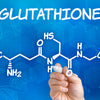Optimize heart health with this cruciferous vegetable

Many people seem to be under the general impression that cabbage is nothing more than a chewier, stronger-tasting version of lettuce. But – surprise! - cabbage and lettuce don’t even belong to the same family. Cabbage is classified as a cruciferous vegetable (and is closely related to broccoli, Brussels sprouts and cauliflower) while lettuce is technically a member of the daisy family.
Although cabbage has a somewhat unglamorous image, it’s hard to find a food that’s as low in calories - but at the same time, as packed with vitamins, minerals and antioxidants - as this healthy veggie. In fact, cabbage is a full-fledged superfood with plenty of evidence-backed health benefits to its credit. Let’s look at three of the most significant gifts that cabbage offers the body.
Cabbage is crammed with heart-healthy vitamins and compounds
Cabbage supports cardiovascular health in a surprising variety of ways. A cup of cabbage offers up a whopping 85 percent of the recommended intake for vitamin K, which helps to keep arteries healthy and clear by preventing the accumulation of plaque deposits. The same serving contains 10 percent of the recommended amount of folate, a B vitamin believed to reduce the risk of strokes.
Cabbage is also rich in antioxidant vitamin C, with a cup of red cabbage contributing 83 percent of the daily adult requirement. Vitamin C helps to protect against the oxidative damage implicated in heart disease - while also facilitating the production of collagen, which is needed for strong, flexible blood vessels.
If you opt for red or purple cabbage, you’ll be getting the benefit of natural antioxidant plant pigments known as anthocyanins. A 2018 analysis of studies published in Critical Reviews in Food Science and Nutrition showed that people who ate a diet high in anthocyanins had a significantly lower risk of dying from heart disease. In addition, soluble fiber in cabbage helps promote healthy levels of blood sugar and cholesterol.
Finally, cabbage is high in sulforaphane, a sulfur compound with anti-inflammatory qualities. Researchers report that sulforaphane appears to reduce the chronic systemic inflammation that is at the root of many degenerative conditions, including heart disease. Factor in the blood pressure-lowering potassium found in cabbage, and you’ve got yourself one heart-healthy veggie!
Eat cabbage for a happy gut
With every cup containing two grams of dietary fiber, cabbage is a good vegetable to eat for digestive health. For one thing, much of the fiber in cabbage is insoluble, meaning it can’t be digested in the intestinal tract. (Why on earth would someone want to eat something indigestible, you ask? Here’s why: it helps to “speed up traffic” in the gut, thereby encouraging regular elimination and helping to ward off uncomfortable constipation).
In addition, up to 40 percent of the fiber in cabbage is soluble fiber, which helps to increase the population of “friendly” bacteria in the gut microbiome. These beneficial “bugs, which include Lactobacillus and Acidophilus, help to produce vitamins K and B12 in the body. They also boost the immune system, promote healthy metabolism and weight and even benefit mood and cognition.
Cabbage’s natural antibacterial properties may help to protect against infection caused by the H. pylori bacteria, which is implicated in stomach ulcers. Clearly, eating cabbage can help promote a “happier” digestive tract - which is never a bad thing!
Sulforaphane in cabbage protects against cancer
The sulforaphane in cabbage does more than optimize heart health. It is also believed to release antioxidant and detoxification enzymes that help protect against cancer-causing toxins. In fact, test tube and animal studies have shown that sulforaphane inhibits the growth of cancer cells.
While more research is needed to explore sulforaphane’s potential against cancer in humans, population studies have clearly shown that higher dietary intake of cruciferous vegetables (like cabbage) is linked with a reduced risk of developing the disease. Eating cabbage - along with broccoli, Brussels sprouts, cauliflower and kale - may be a good way to increase your odds of remaining cancer-free.
Cabbage is easy to incorporate in your diet
Cabbage is available in a range of colors, including white, green, purple and red. While all are nutritious, more intensely colored cabbages are higher in anthocyanins.
Choose firmly leafed heads of cabbage that feel heavy for their size. (Pro tip: For maximum sulforaphane intake, consume cabbage raw or lightly steamed. One study, performed on broccoli, showed that the raw vegetable provided literally ten times more sulforaphane than baked or boiled versions!)
You can always “play the greatest hits” of cabbage by using it in such familiar favorites as coleslaw and sauerkraut. (When it comes to sauerkraut, the fresh, unpasteurized variety is preferable). Or, you can switch things up by gently steaming cabbage with butter, sea salt, black pepper and garlic for a tasty side dish. You can also combine chilled raw cabbage with sesame oil, vinegar and soy sauce for a tangy and refreshing Asian salad. Don’t forget about cabbage juice, which has a surprisingly delicate taste and can be partnered with apple and orange juice.
By the way, a whole cup of cabbage contains a mere 22 calories – while providing fiber, vitamins, minerals and polyphenols that support health and well-being. This inexpensive, nutritious and surprisingly tasty superfood makes a great addition to your healthy diet.
Sources for this article include:






